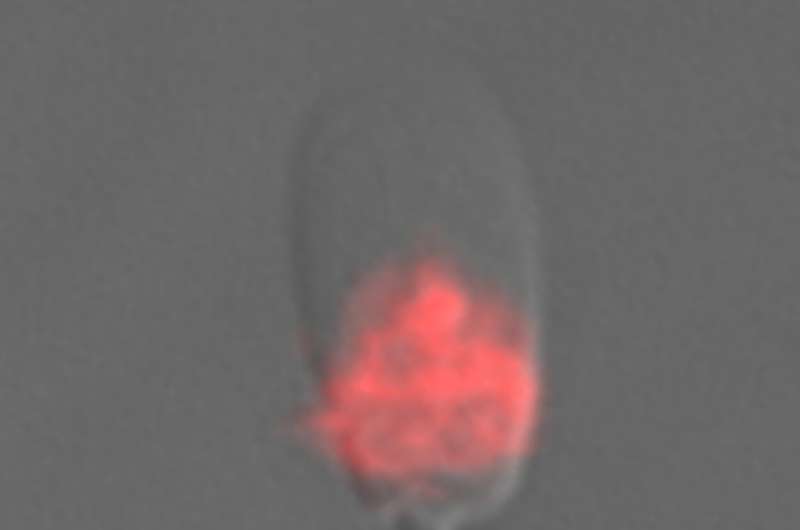New insights into the binding behaviour of the porcine sperm protein AWN

A scientific team from the Leibniz Institute for Zoo and Wildlife Research (Leibniz-IZW), Humboldt-Universität zu Berlin (HUB) and the Leibniz Research Institute for Molecular Pharmacology (Leibniz-FMP) discovered a previously unknown localisation of the porcine sperm protein AWN, strengthening the assumption that this protein is involved in sperm-egg fusion. The new findings are important for assisted reproduction. The results were published in the journal Biology of Reproduction.
Proteins are an essential component of the seminal fluid and play a role in fertilization. On the one hand, they probably protect the male germ cells (sperm) during their migration to the oocyte, on the other hand they also mediate the communication of sperm with the female genital tract and the female gametes. Fibronectin type II proteins are predominant in ruminants, domestic dogs and humans, whereas spermadhesins are predominantly described in domestic horses and domestic pigs. In most animal species, the dominant proteins are still largely unknown. In order to better understand fertility problems and to improve techniques of assisted reproduction such as artificial insemination for the conservation of threatened species, the study of such proteins and their function therefore makes an important contribution.
Since experiments with natural proteins are difficult to carry out, the scientists used the possibility of producing proteins in genetically modified bacteria in the laboratory. "Such proteins could then also be used for assisted reproduction techniques," says Beate Braun, a scientist at Leibniz-IZW. The scientists used this technique to produce a spermadhesin, AWN (named after the letter codes for the first three amino acids in the protein chain: A = alanine, W = tryptophan, N = asparagine) in this way.
Spermadhesins have the ability to bind to other structures. However, the molecular binding partner sites—especially of sperm—are diverse and not well known. Although spermadhesins form aggregates with each other or with other proteins, it is unclear whether they can also directly bind to lipids of the sperm envelope—similar to fibronectin type II proteins. "We have now showed for the first time an electrostatically-driven binding mechanism of AWN to negatively charged lipids. This is very remarkable, since negative lipids are usually located on membranes inside cells. Until now, however, only a localisation of AWN proteins on the surface of the sperm head had been described," explains Pascal Kroh, Ph.D. student at Leibniz-IZW.
In order to visualize whether AWN was actually inside sperm cells, the scientific team had an antibody produced against a fragment of natural AWN. Fluorescence and electron microscopy images indeed confirmed the intracellular presence of natural AWN. Interestingly, the scientists found the protein mainly in the equatorial head segment of boar spermatozoa. The way it could have been is incorporated into the sperm must have taken place during the maturation process inside the testis/epididymis. "This fits, as AWN is not only a component of the seminal fluid, but is already generated in the testis," says Pascal Kroh.
If the processes that prepare spermatozoa for fertilization in the female genital tract are simulated in the laboratory, the protein remains in the equatorial sperm segment. "This suggests that the sperm adhesin AWN could also play a role in the fusion of sperm and egg," surmises Karin Müller, a reproductive biologist at Leibniz-IZW. The team will test this hypothesis in future studies.
More information: Pascal D Kroh et al, Boar spermadhesin AWN: novel insights in its binding behavior and localization on sperm, Biology of Reproduction (2022). DOI: 10.1093/biolre/ioab244
Journal information: Biology of Reproduction
Provided by Forschungsverbund Berlin e.V. (FVB)





















